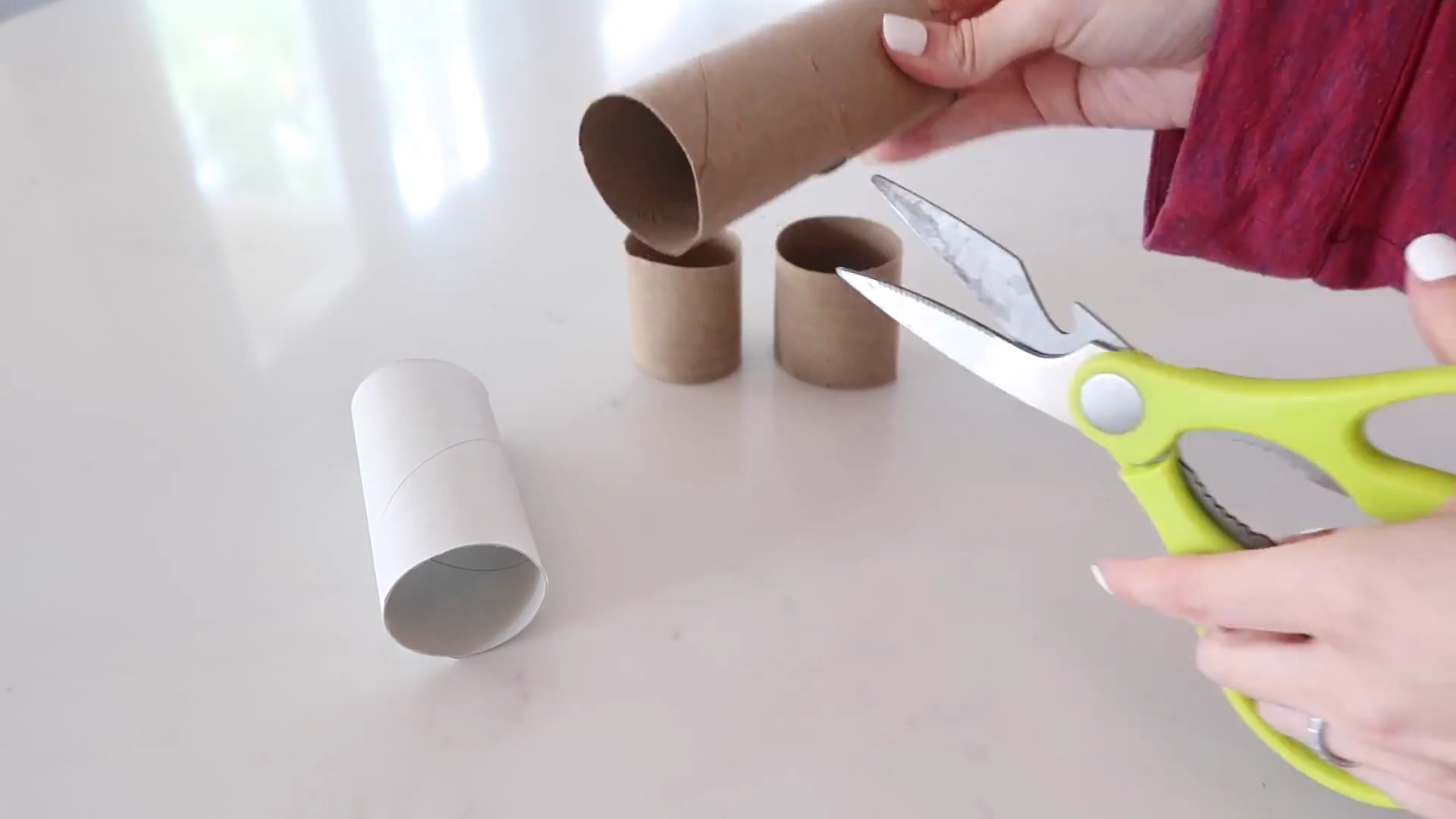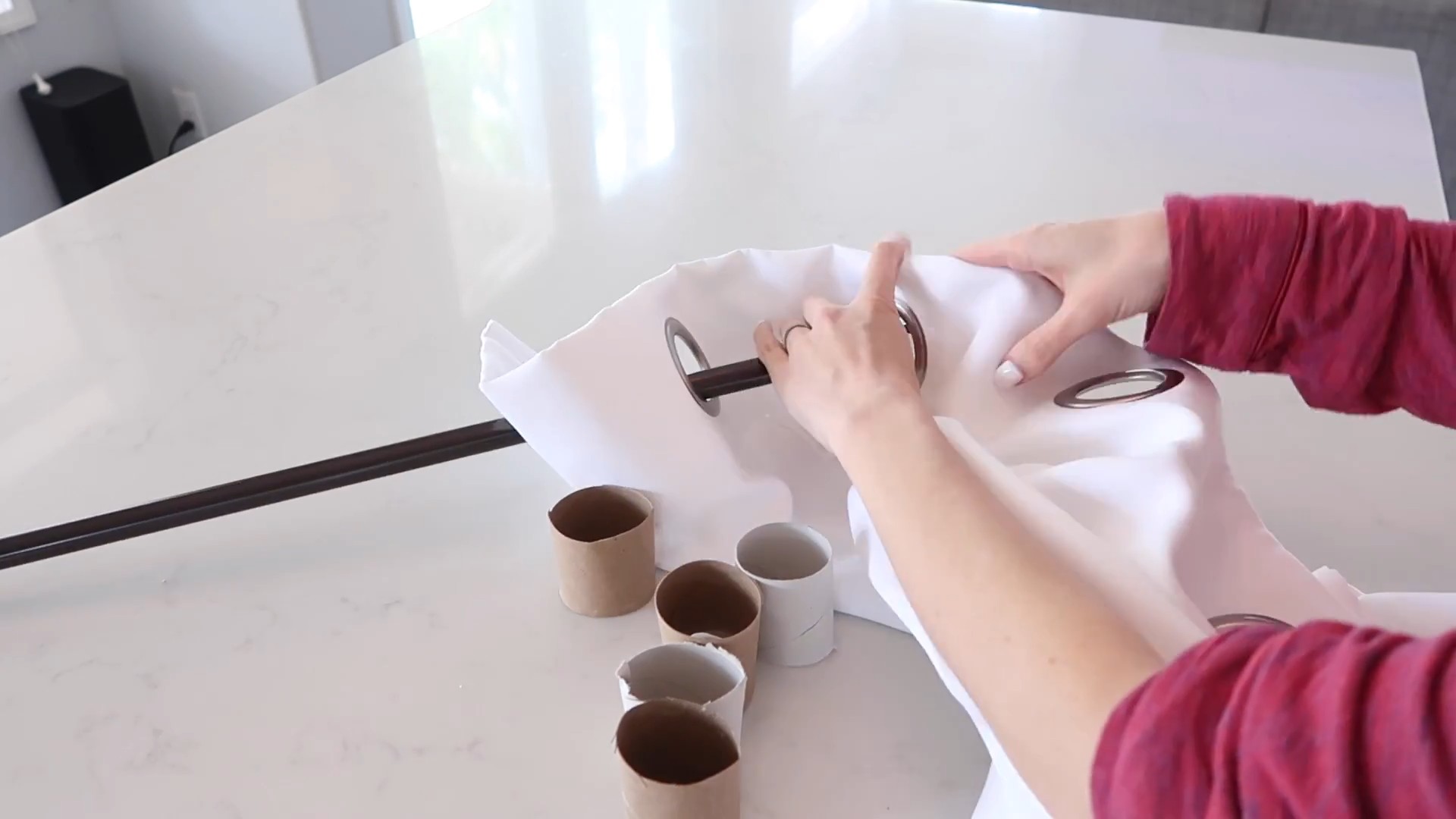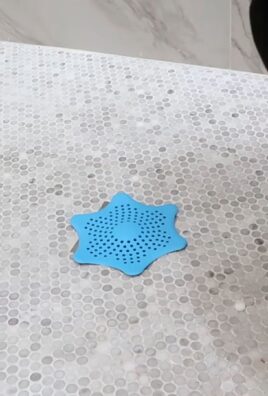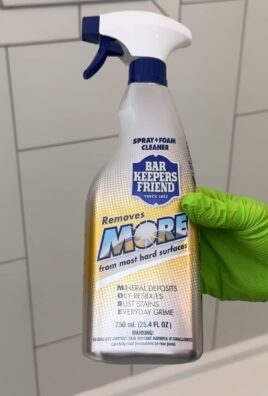Home Hacks and Gadgets – ever feel like your house is a never-ending project? I know I do! From squeaky doors to stubborn stains, there’s always something that needs fixing or improving. But what if I told you that you could tackle most of these challenges with simple, clever solutions using items you probably already have lying around?
For centuries, resourceful individuals have been developing ingenious ways to make their lives easier at home. Think about it – our grandmothers and great-grandmothers didn’t have access to the endless stream of specialized products we do today. They relied on their ingenuity and a bit of elbow grease to keep their homes running smoothly. This tradition of DIY resourcefulness is something I find incredibly inspiring, and it’s what fuels my passion for sharing these home hacks and gadgets with you.
In today’s fast-paced world, who has time to spend hours scrubbing, repairing, or organizing? That’s where these DIY tricks come in! They’re designed to save you time, money, and frustration. Whether you’re looking to declutter your space, fix a common household problem, or simply add a touch of personality to your décor, these hacks will empower you to take control of your home and make it a more comfortable and efficient space. So, let’s dive in and discover some amazing home hacks and gadgets that will transform your living space!

DIY Floating Shelves: A Simple Guide to Adding Style and Storage
Hey there, fellow DIY enthusiasts! I’m so excited to share this project with you – building your own floating shelves. They’re a fantastic way to add a modern, minimalist touch to any room while maximizing storage space. Plus, they’re surprisingly easy to make! I’ll walk you through every step, from gathering your materials to mounting the finished shelves. Let’s get started!
Materials You’ll Need
Before we dive in, let’s make sure you have everything you need. This list might seem long, but most of these items are common tools you probably already have in your workshop.
* Wood for Shelves: Choose your wood wisely! I recommend using solid wood like pine, oak, or maple for a sturdy and beautiful shelf. The thickness will depend on the weight you plan to put on the shelves, but 1-2 inches is usually a good starting point. Consider the length and depth you want your shelves to be.
* Metal Shelf Brackets: These are the hidden heroes of floating shelves. You can find these online or at your local hardware store. Make sure they’re rated for the weight you plan to put on the shelves. Look for brackets specifically designed for floating shelves.
* Wood Screws: You’ll need screws to attach the brackets to the wood shelves and to the wall studs. Choose screws that are long enough to securely fasten the brackets but not so long that they poke through the front of the shelf.
* Wall Anchors (Optional): If you can’t find wall studs where you want to mount your shelves, you’ll need wall anchors. Choose anchors that are appropriate for the type of wall you have (drywall, plaster, etc.) and the weight you plan to put on the shelves.
* Wood Glue: This will help create a stronger bond between the wood pieces, especially if you’re building a thicker shelf from multiple layers.
* Wood Stain or Paint: Choose a stain or paint that matches your decor. I personally love the look of natural wood with a clear coat of polyurethane.
* Polyurethane or Varnish (Optional): This will protect the wood from scratches and moisture.
* Sandpaper: You’ll need sandpaper in various grits (e.g., 80, 120, 220) to smooth the wood before staining or painting.
* Wood Filler (Optional): If your wood has any imperfections, you can use wood filler to fill them in.
* Safety Glasses: Always protect your eyes when working with power tools.
* Dust Mask: Protect your lungs from sawdust.
* Measuring Tape: Essential for accurate measurements.
* Pencil: For marking measurements.
* Level: To ensure your shelves are perfectly level.
* Stud Finder: To locate wall studs.
* Drill: For drilling pilot holes and driving screws.
* Screwdriver: For manually tightening screws.
* Clamps: To hold the wood pieces together while the glue dries.
* Saw: To cut the wood to the desired length and width. A miter saw is ideal, but a circular saw or even a hand saw will work.
* Sanding Block or Orbital Sander: To make sanding easier and more efficient.
* Rags or Brushes: For applying stain, paint, and polyurethane.
Step-by-Step Instructions
Okay, let’s get to the fun part – building the shelves! Follow these steps carefully, and you’ll have beautiful floating shelves in no time.
1. Prepare the Wood
1. Cut the Wood: Using your saw, cut the wood to the desired length and width for your shelves. Remember to measure twice and cut once! If you’re using multiple pieces of wood to create a thicker shelf, cut all the pieces to the same dimensions.
2. Sand the Wood: Start with a coarser grit sandpaper (e.g., 80 grit) to remove any rough edges or imperfections. Then, gradually move to finer grits (e.g., 120 grit, then 220 grit) to smooth the wood surface. Sand with the grain of the wood for the best results.
3. Fill Imperfections (Optional): If your wood has any knots, cracks, or other imperfections, use wood filler to fill them in. Let the wood filler dry completely according to the manufacturer’s instructions, and then sand it smooth.
4. Assemble the Shelf (If Necessary): If you’re building a thicker shelf from multiple layers of wood, apply wood glue to the surfaces that will be joined together. Clamp the pieces together tightly and let the glue dry completely according to the manufacturer’s instructions.
2. Stain or Paint the Wood
1. Clean the Wood: Before staining or painting, wipe the wood clean with a tack cloth to remove any dust or debris.
2. Apply Stain or Paint: Apply the stain or paint evenly to the wood surface, following the manufacturer’s instructions. If you’re using stain, apply it with a rag or brush and wipe off the excess. If you’re using paint, apply it with a brush or roller.
3. Let it Dry: Allow the stain or paint to dry completely according to the manufacturer’s instructions.
4. Apply Additional Coats (Optional): If you want a deeper color or more durable finish, apply additional coats of stain or paint, allowing each coat to dry completely before applying the next.
5. Apply Polyurethane or Varnish (Optional): Once the stain or paint is completely dry, apply a coat of polyurethane or varnish to protect the wood from scratches and moisture. Let it dry completely according to the manufacturer’s instructions. You can apply multiple coats for added protection.
3. Attach the Shelf Brackets
1. Measure and Mark: Measure and mark the locations for the shelf brackets on the underside of the shelf. Make sure the brackets are evenly spaced and positioned to provide adequate support for the shelf. I usually place one bracket near each end and one in the middle for longer shelves.
2. Drill Pilot Holes: Drill pilot holes at the marked locations. This will make it easier to drive the screws and prevent the wood from splitting.
3. Attach the Brackets: Attach the shelf brackets to the underside of the shelf using wood screws. Make sure the screws are long enough to securely fasten the brackets but not so long that they poke through the top of the shelf.
4. Mount the Shelves to the Wall
1. Locate Wall Studs: Use a stud finder to locate the wall studs where you want to mount the shelves. Mark the locations of the studs with a pencil.
2. Mark Bracket Locations on the Wall: Hold the shelf against the wall at the desired height and use a level to ensure it’s perfectly level. Mark the locations of the bracket mounting holes on the wall.
3. Drill Pilot Holes in the Wall: Drill pilot holes at the marked locations on the wall. If you’re drilling into a wall stud, use a drill bit that’s slightly smaller than the diameter of the screws you’ll be using. If you’re drilling into drywall and can’t find a stud, you’ll need to use wall anchors.
4. Install Wall Anchors (If Necessary): If you’re using wall anchors, install them according to the manufacturer’s instructions.
5. Attach the Shelves to the Wall: Align the shelf brackets with the pilot holes in the wall and attach the shelves to the wall using wood screws. Make sure the screws are long enough to securely fasten the shelves to the wall.
6. Double-Check Level: Use a level to double-check that the shelves are perfectly level. If necessary, adjust the screws until the shelves are level.
Tips and Tricks for Success
* Choose the Right Wood: The type of wood you choose will affect the look and durability of your shelves. Consider the style of your room and the weight you plan to put on the shelves when choosing your wood.
* Use a Level: A level is your best friend when installing floating shelves. Make sure your shelves are perfectly level to prevent items from sliding off.
* Don’t Overload the Shelves: Floating shelves are strong, but they’re not invincible. Don’t overload them with too much weight.
* Consider the Depth: Think about what you plan to put on the shelves when deciding on the depth. Deeper shelves can hold larger items, but they can also take up more space.
* Get Creative with Placement: Don’t be afraid to get creative with the placement of your shelves. You can stagger them, group them together, or even create a gallery wall.
* Pre-Drill Everything: Always pre-drill pilot holes before driving screws. This will prevent the wood from splitting and make it easier to drive the screws straight.
*

Conclusion
So, there you have it! This simple yet effective DIY trick is a game-changer for anyone looking to streamline their life and save money. We’ve explored how to create a versatile and reusable cleaning solution from readily available ingredients, effectively tackling grime and dirt throughout your home. The beauty of this method lies not only in its cost-effectiveness but also in its eco-friendliness, reducing your reliance on harsh chemicals and single-use plastics.
Why is this a must-try? Because it empowers you to take control of your cleaning routine, offering a customizable and sustainable alternative to conventional products. Imagine the satisfaction of knowing exactly what goes into your cleaning solutions, eliminating the worry of hidden toxins and allergens. Plus, the savings you’ll accumulate over time can be substantial, freeing up your budget for other priorities.
But the possibilities don’t stop there! Feel free to experiment with different essential oils to create your signature scent. Lavender, lemon, tea tree, and eucalyptus are all excellent choices, each offering unique aromatherapy benefits. For tougher stains, consider adding a small amount of borax or washing soda to your mixture. Remember to always test any new solution on an inconspicuous area first to ensure it doesn’t damage the surface.
We’ve also touched upon the versatility of this DIY approach. From cleaning countertops and floors to refreshing fabrics and sanitizing surfaces, this solution can handle a wide range of household tasks. Its gentle yet effective formula makes it safe for use around children and pets, providing peace of mind for families.
This isn’t just about cleaning; it’s about embracing a more mindful and sustainable lifestyle. It’s about reducing your environmental footprint, saving money, and creating a healthier home environment for yourself and your loved ones.
We are confident that once you try this DIY trick, you’ll be amazed by its simplicity and effectiveness. It’s a small change that can make a big difference in your life and the world around you.
So, what are you waiting for? Gather your ingredients, follow the instructions, and prepare to be amazed. We encourage you to try this **home hack** and share your experience with us in the comments below. Let us know what variations you’ve tried, what scents you’ve discovered, and how this DIY solution has transformed your cleaning routine. Your feedback is invaluable and helps us continue to provide helpful and informative content. Let’s build a community of DIY enthusiasts who are passionate about creating a cleaner, healthier, and more sustainable world, one homemade cleaning solution at a time. We can’t wait to hear your success stories!
FAQ
Frequently Asked Questions About Our DIY Cleaning Solution
1. What are the basic ingredients needed for this DIY cleaning solution?
The core ingredients typically include water, white vinegar (or rubbing alcohol for disinfecting), and a few drops of your favorite essential oil for fragrance. Some variations may incorporate baking soda, borax, or washing soda for added cleaning power, depending on the intended use. Always ensure you are using appropriate safety precautions when handling borax or washing soda.
2. Can I use this DIY cleaner on all surfaces in my home?
While this DIY cleaner is generally safe for most surfaces, it’s crucial to test it on an inconspicuous area first, especially on delicate materials like wood, marble, or granite. Vinegar, in particular, can be acidic and may damage certain surfaces over time. For these surfaces, consider using a diluted solution or opting for a different cleaning agent altogether.
3. How long does the DIY cleaning solution last?
The shelf life of your DIY cleaning solution depends on the ingredients used. Solutions containing only water, vinegar, and essential oils can typically last for several months when stored in a cool, dark place. However, solutions containing fresh ingredients like lemon juice may have a shorter shelf life and should be used within a week or two. Always label your bottles with the date of preparation to keep track of freshness.
4. What essential oils are best to use in this DIY cleaning solution?
The best essential oils to use depend on your personal preferences and the desired cleaning effect. Lavender is known for its calming and antibacterial properties, lemon is a powerful degreaser and deodorizer, tea tree oil is a potent antiseptic and antifungal agent, and eucalyptus is effective at disinfecting and clearing congestion. Experiment with different combinations to find your favorite scent and cleaning power.
5. Can I use this DIY cleaner to disinfect surfaces?
While vinegar has some disinfecting properties, it’s not as effective as commercial disinfectants. To create a more potent disinfecting solution, consider using rubbing alcohol (isopropyl alcohol) with a concentration of at least 70%. Be sure to follow proper safety precautions when using rubbing alcohol, and avoid using it on surfaces that may be damaged by alcohol.
6. Is this DIY cleaner safe to use around children and pets?
Generally, yes, this DIY cleaner is safer than many commercial cleaning products, as it avoids harsh chemicals and toxins. However, it’s still important to exercise caution, especially when using essential oils. Some essential oils can be harmful to pets, so research the safety of each oil before using it around animals. Always store your DIY cleaning solutions out of reach of children and pets.
7. How do I adjust the recipe for different cleaning tasks?
The beauty of this DIY solution is its adaptability. For general cleaning, a simple mixture of water, vinegar, and essential oils works well. For tougher stains, you can add baking soda or washing soda. For disinfecting, use rubbing alcohol instead of vinegar. Experiment with different ratios and ingredients to find the perfect formula for each cleaning task.
8. What type of spray bottle should I use for this DIY cleaner?
A sturdy, reusable spray bottle is ideal for storing and dispensing your DIY cleaning solution. Opt for a bottle made of PET plastic or glass, as these materials are less likely to react with the ingredients in the solution. Be sure to label the bottle clearly to avoid confusion.
9. Can I use this DIY cleaner to clean my windows and mirrors?
Yes, this DIY cleaner works great for cleaning windows and mirrors. Simply mix equal parts water and vinegar in a spray bottle, spray the surface, and wipe clean with a microfiber cloth. For streak-free results, avoid cleaning windows on a sunny day, as the solution may dry too quickly.
10. What if I don’t have essential oils? Can I still make this DIY cleaner?
Yes, you can still make this DIY cleaner without essential oils. The essential oils are primarily for fragrance and added cleaning benefits, but they are not essential for the basic cleaning function. Simply omit the essential oils and use a mixture of water and vinegar (or rubbing alcohol) for a simple and effective cleaning solution.




Leave a Comment